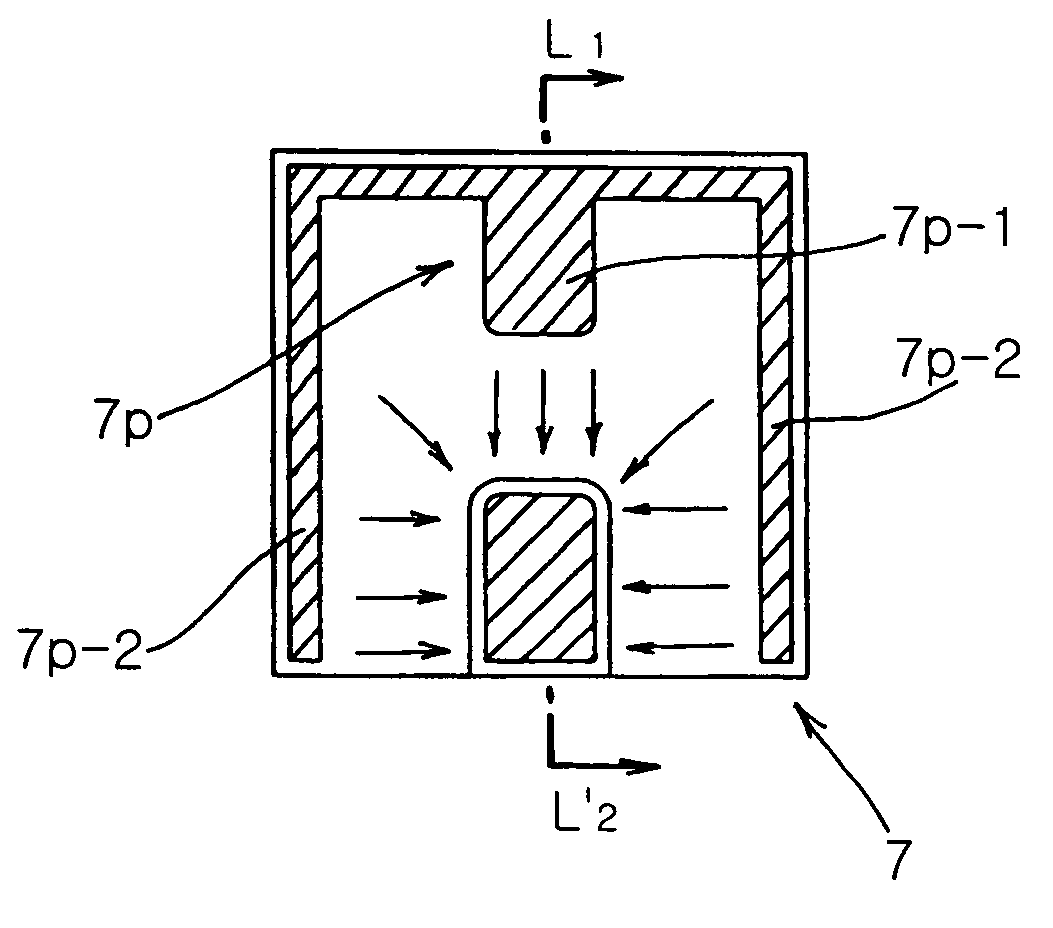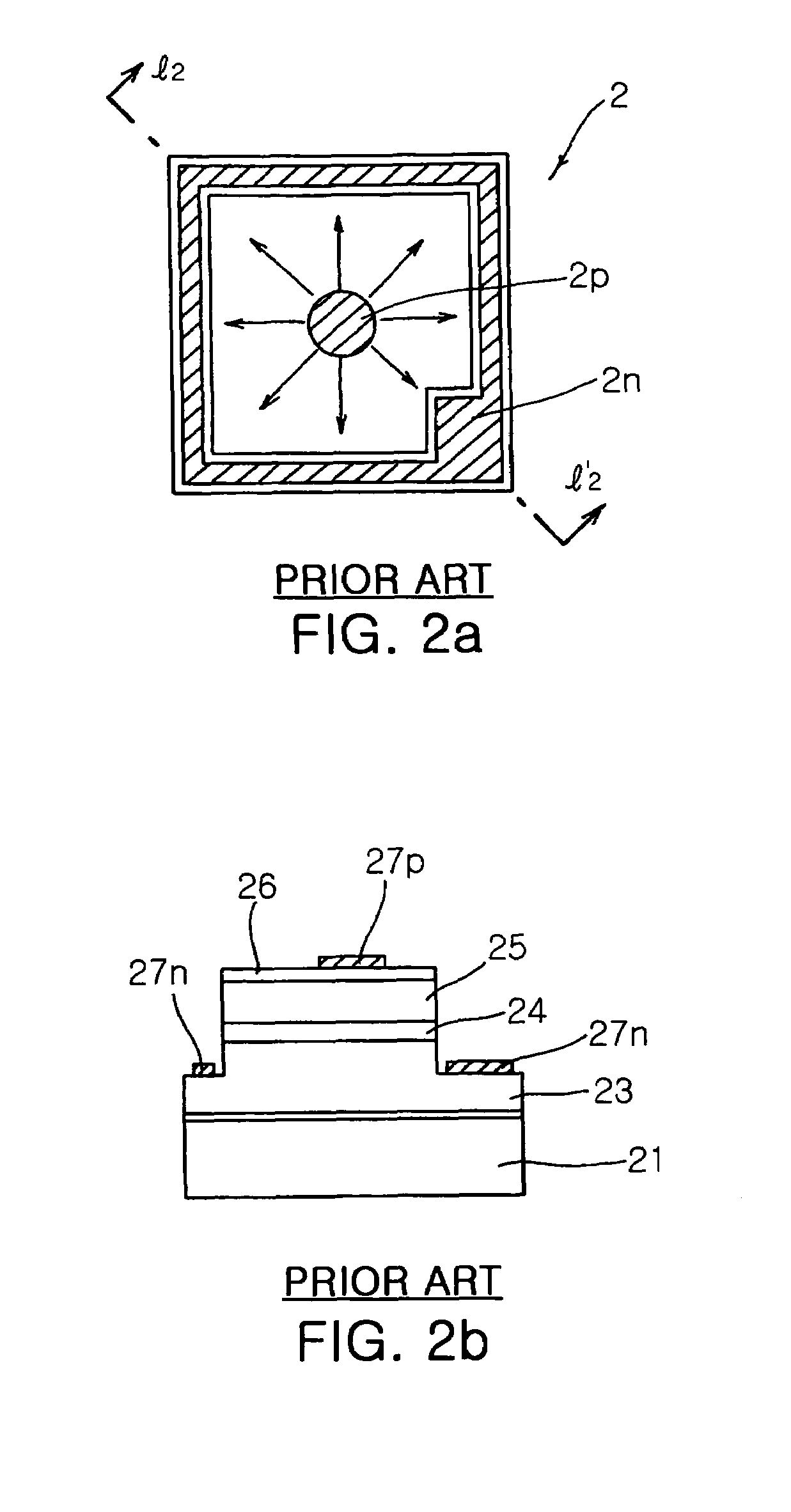Nitride semiconductor light emitting device and method for manufacturing the same
a light-emitting device and semiconductor technology, applied in the direction of semiconductor devices, basic electric elements, electrical appliances, etc., can solve the problems of difficult to provide a high brightness, electric current diffusivity, and inability to display the full range of natural colors, so as to reduce total current diffusivity, enhance brightness, and high brightness characteristics
- Summary
- Abstract
- Description
- Claims
- Application Information
AI Technical Summary
Benefits of technology
Problems solved by technology
Method used
Image
Examples
first embodiment
[0033]Referring to FIGS. 6a and 6c, a nitride semiconductor light emitting device 6 according to the present invention comprises: a substrate 61 having an approximately rectangular top surface; an n-type nitride semiconductor layer 63 formed on the substrate 61 and provided with an electrode region of a predetermined area adjacent to the center of one lateral side of the top surface of the substrate; an n-type electrode 67n or 6n formed on the n-type nitride semiconductor layer 63; an activation layer 64 comprising an un-doped nitride semiconductor material and formed on the n-type nitride semiconductor layer 63 such that the electrode region is exposed; a p-type nitride semiconductor layer 65 formed on the activation layer 64; and a p-type electrode 67p or 6p formed on the p-type nitride semiconductor layer 65. The p-type electrode 67p or 6p comprises a bonding pad 6p-1 adjacent to the center of a lateral side opposite to the lateral side adjacent to the electrode region to have a ...
second embodiment
[0038]The laminated structure of the nitride semiconductor light emitting device, which comprises the substrate 61, the buffer layer 62, the n-type nitride semiconductor layer 63, the activation layer 64, the p-type nitride layer 65 and the transparent layer 66, as described above, is also applied to the present invention, which will be described hereinafter.
[0039]The present invention is primarily characterized by the structure of the p-type electrode 67p and the n-type electrode 67n for supplying power to the nitride semiconductor device. The enhanced structure of the electrodes in the present invention provides advantageous effects of enhancements in a current diffusivity in the nitride semiconductor device, in brightness characteristics and in driving voltage only by improving a metal patterning process, without greatly changing the manufacturing process and materials to be used for the nitride semiconductor light emitting device.
[0040]The nitride semiconductor light emitting de...
PUM
 Login to View More
Login to View More Abstract
Description
Claims
Application Information
 Login to View More
Login to View More - R&D
- Intellectual Property
- Life Sciences
- Materials
- Tech Scout
- Unparalleled Data Quality
- Higher Quality Content
- 60% Fewer Hallucinations
Browse by: Latest US Patents, China's latest patents, Technical Efficacy Thesaurus, Application Domain, Technology Topic, Popular Technical Reports.
© 2025 PatSnap. All rights reserved.Legal|Privacy policy|Modern Slavery Act Transparency Statement|Sitemap|About US| Contact US: help@patsnap.com



